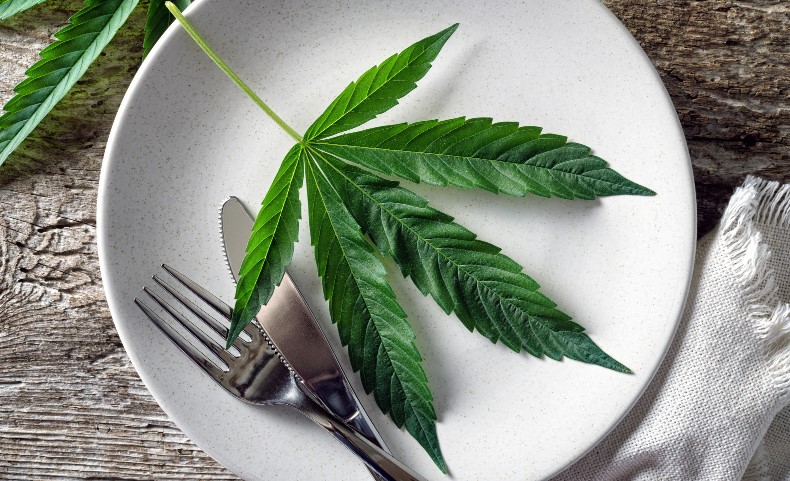Uncategorized
Best Vegan Cannabis Edibles Recipes
Are you looking to make great vegan edibles? Are you overwhelmed by how many recipes are out there? Us too, but don’t worry, we’ve got you covered.
As medical marijuana becomes more widely available, the intersection between cannabis consumers and dietary absolutists who only eat vegan foods is becoming more common. Any vegan cannabis enthusiast who searches online for recipes that will produce THC- and CBD-infused food without any animal products will find a multitude of plant-based methods for cooking with cannabis. With so many options to turn raw cannabis into delicious and medicinally potent marijuana confections, any vegan aspiring cannabis chef can feel overwhelmed.
The vegan chef exploring medical marijuana dishes estimates that there are hundreds of ways to make and consume these edibles, all without involving any animal products. “It’s almost too much cannabis goodness to take in,” exclaims the budding cannabis cook. “Where would I even begin?”
You can find out how to make vegan edibles by reading the rest of this Leafwell article.
Making Vegan Cannabis Edibles: Hmarijuana? Zesty and were’s Where to Start
The main perk of making vegan marijuana edibles is that cannabis plants and their extracts do not contain any animal DNA. So, to sum it up, cannabis is vegan. When preparing edible vegan cannabis snacks, the number one rule is to not include any animal protein products in the mix.
As with any cooking, it’s important to have all the right tools before you start crafting vegan cannabis edibles. After all, nothing quite puts a damper on your creativity like having to stop what you’re doing to go borrow an electric beater from a neighbor.
After taking dozens of vegan cannabis edibles master classes, I have compiled a list of essential utensils that every vegan cannabis chef’s kitchen should have before embarking on their own edible creations:
- Parchment paper
- Baking sheets
- Pots of various sizes
- Frying pan
- Bowls from small to large
- Cheesecloth
- Fine mesh sieve
- Electric beater or stand mixer
- Spatula
- Cookie scoop
- Wire rack
- Salad bowl
- Individual Serving Jars
Before trying to make any vegan cannabis dish, the chef should read through the recipe carefully.Make sure that there are no strange tools or ingredients in the small print. It’s common for vegans to seem like they’re missing at least one seasoning or casserole dish when following a recipe, so be prepared to get creative or have a friend nearby who can help out if needed.

How To Tell How Strong Your Edibles Are
If you’re a cannabis chef, sooner or later you’ll need to figure out how to calculate THC or CBD potency. Unfortunately, there’s no foolproof way to know exactly how potent your final product will be without sending it off to a lab. However, Cannabis Care by Design has come up with an easy calculation that can give you a rough estimate of potency.
You can easily calculate the dosage of THC in a vegan cannabis edible by factoring in the number of grams of flower used in the recipe, which you will first need to convert to milligrams (mg) by multiplying it by 1,000. Then, multiply the cannabis flower’s THC percentage by its weight in milligrams to arrive at the total THC percentage for your batch. Finally, divide that total number of milligrams by the planned number of individual servings.
If doing these calculations seem like a lot of work, Cannabis Care by Design has provided a helpful example. If you have seven grams of flower with 12.5 percent THC content, that would translate to anywhere from 72.91 mg to 18.23 mg of THC per serving. Remember, it’s always better to be safe than sorry so we recommend taking the time to calculate how much THC your edibles will contain before consuming them
Grams of flower x 1000 = milligrams of flower
Milligrams of flower x THC % = THC % within the edible batch
Decarboxylation: Priming Cannabis Flower to Deliver Cannabis Power
Any vegan cooking cannabutter and cannabis oil are two great ingredients to have on-hand when attempting to cook with marijuana. Oftentimes, one of these activated ingredients is sufficient, but it depends on the meal you’re trying to make.
The initial step of “decarbing” the marijuana flower is essential to cooking up any forms of cannabis oil or cannabutter. Decarboxylation is the process of converting the plant’s THCA into THC. Without decarboxylation, all edibles created with cannabis would be non-psychoactive. The conversion from THCA to THC most often occurs when consuming cannabis as smoke .
If you want to create effective cannabis oil or unguents, you can’t just use any old marijuana. The leaves need to be treated first so that they decarboxylate without burning up.
If you want to make THC-infused food, you have to retain and activate all of the THC, CBD, and terpenes by heating the marijuana leaves at 240 degrees Fahrenheit for 45 to 60 minutes. By doing this, you create a substance that can be used in many cannabis-based dishes while still providing all of the same medical benefits.
Two Vegan Cannabis Foodstuffs to Prepare Before All Others
Once decarboxylation is complete, the process of making cannabutter or cannabis oil can begin.
Homestead and Chill’s primer for making cannabis oil suggests using organic, homegrown cannabis alongside coconut or olive oil to create a “pleasant-tasting and very nourishing” basic cannabis ingredient that has “strong natural antifungal and antimicrobial properties.” Homestead and Chill points out that coconut oil may be the better binding agent for cannabinoids because it contains more saturated fat than olive oil.
To make cannabis oil, you’ll need a double boiler and some patience. Simmer the ingredients for several hours, stirring occasionally, then strain through cheesecloth into a bowl. The finished product should last six months to a year.
If you want to cook with cannabis, it is important to be patient and mindful, especially when making cannabutter. Using sticks of vegan butter instead of the cups of olive or coconut oil called for in most recipes will take multiple hours to make a batch of Cannabutter . However, if you follow a basic recipe , you will end up with an airtight storage container full of all the good properties that come from eating cannabis-infused cuisine.
What Kinds of Vegan Cannabis Edible Delights Can You Make Now?
The vegan cannabis edible cook, after Stashing away decarboxylated cannabutter or cooking oil, can start playing around with different recipes.
With cannabis cashew cream? Vegan Vietnamese rice noodle salad infused with marijuana? Zesty and weedy vegan fettuccine Alfredo? Vegan cannabis-infused waffles CBD superfood pesto pasta with walnuts?) Raw vegan chocolate cannabis pudding)? CBD-infused sweets with turmeric and ginger) Watermelon chia CBD pops)? CDB hot sauce’?
The ever-exploring vegan cannabis chef is back to their original problem: With the immense range of vegan medical marijuana comestibles on the market, where does a plant-based cannabis enthusiast start? We advise that you substitute standard oil or butter for your canna oil or cannabutter in one of your go-to recipes. Let us know how it turns out in the comments section below!



